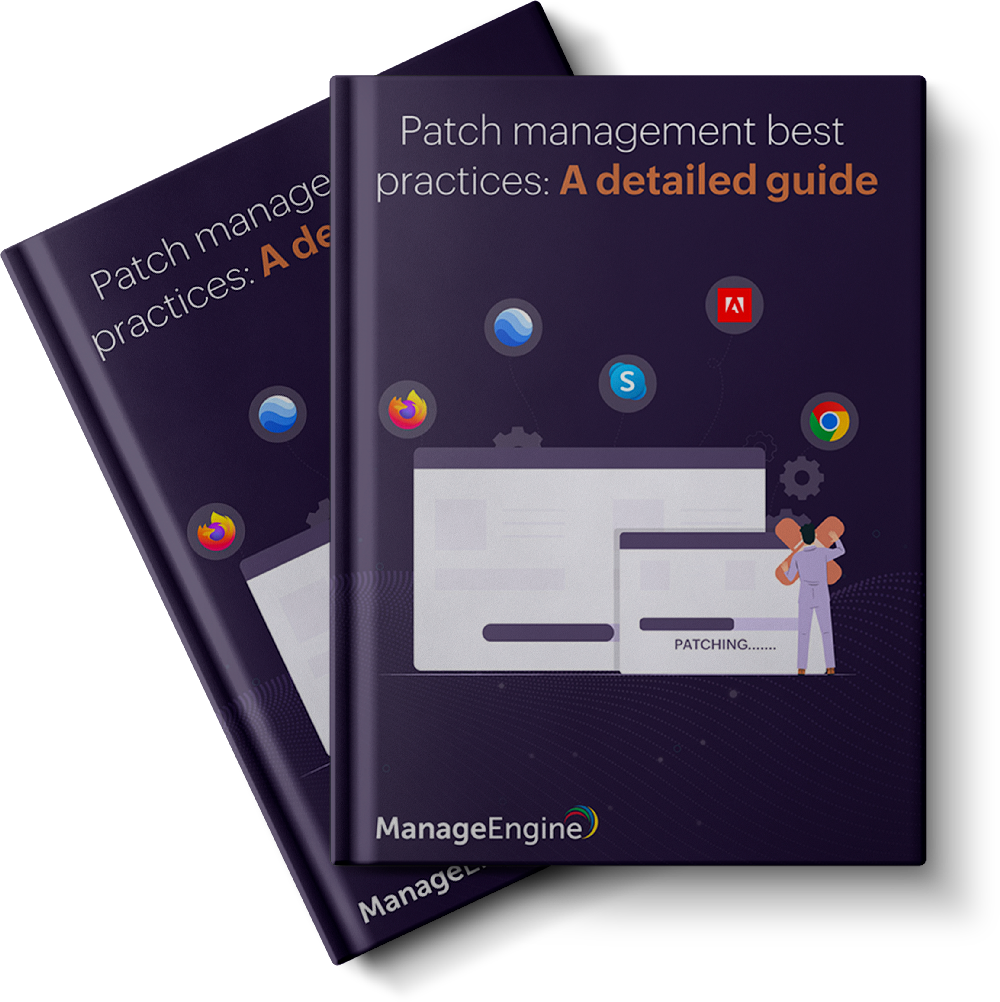
Cyberattacks and data breaches are omnipresent. As per a report by IBM, the average cost of a data breach in 2024 was $4.88 million. When the stakes are so high, shouldn't you be on top of your patching game?
Over the years, patch management has become a walk in the park, thanks to the compilation of patch management best practices. Gone are the days of manual patch downloads, tedious installations, and testing. Automation is the new normal. In this era, embracing software patching best practices is fundamental for ensuring a smooth and effective patch management workflow.
That being said, let's take a look at why organizations must have a set of Windows patch management best practices and for other OSes as well, and explore how you can create yours. By adopting and tailoring these best practices for patch management, you can fortify your network against potential vulnerabilities, ultimately improving cybersecurity. Ready to enhance your approach to patch management?
Let's explore how you can simplify patch management in your network by leveraging the top 12 patch management best practices.
Here's why your enterprise needs to have a proper set of patch management strategies:
IBM's Cost of a Data Breach Report 2021 found that the global average total cost of a data breach is $4.24 million. With the average cost increasing by ~15% over the years ($4.88 million in 2024), cyber breach is now both a expensive affair, both in terms of compliance fines and business loss.
With sensitive information falling into the wrong hands, enterprises not only risk hefty penalties, but they may also lose customers or even go under. Implementing effective patch management best practices ensures fully patched endpoints can prevent security breaches that leverage unpatched vulnerabilities.
Independent research by Ponemon Institute LLC found in a study of 54 companies that compliance costs for a company can be as high as $21.56 million.
However, this is nothing next to the cost of non-compliance. In the majority of cases in this study, non-compliance costs (the highest recorded being $39.22 million) exceed compliance costs.
With cybercrime on the rise, regulatory agencies have taken drastic measures to keep enterprises in line with compliance mandates. An integral part of patch management best practices is a proper patch management strategy that ensures all endpoints in your organization adhere to the compliance standards.
In Q3 2021, ransomware attacks on enterprises and organizations in the US, caused business interruptions for an average length of 22 days, as per Statista.
While the external cost of such interruptions can be easily measured in figures and dollars lost, there's more to that. Dissatisfied clients, privacy concerns and compliance fines, all of these combined can cause irreparable damage to the organization's reputation and revenue.
The only way to prevent such ransomware attacks is to embrace the proactive best practices for patch management and constantly patch vulnerabilities in the network as soon as possible.
Along with security updates, patches offer feature updates, too. Why not experience the latest features that OSs and software roll out for users?
While patch management isn't that complicated, devising software patching best practices for your enterprise can be. Here's a quick peek into the best practices for patch management that you can follow to bolster your patching game.
Stats by a Ponemon Institute study show that it takes 16 days on average to patch a critical vulnerability once detected.
Say goodbye to tedious downloads and manual installations with automated patch deployment. From scanning missing patches to installing them on the respective endpoints, automated deployments are not just easy, but accurate and fast.
As many as 65% of businesses have reported difficulty in prioritizing patches according to a study by Ponemon Institute.
With a critical-updates-first approach, admins can sort and act on the necessary patches that need to be installed immediately. This reduces the threat response time and ensures efficient patch management.
With scheduled auto-deployment of patches, your endpoints will keep receiving regular patch updates as and when released. Our experts recommend scheduling deployments twice a week to allow proper testing and approval of the patches.
While it's essential to patch endpoints as soon as possible, admins also have to ensure continued user productivity. With flexible deployment policies in place, users can choose to postpone updates if the update conflicts with their business-critical tasks.
The integration of meticulous patch management best practices not only enhances your security posture but also lays down a secure foundation for your network.
